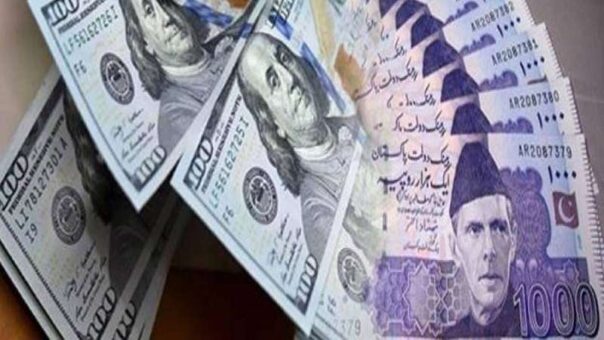Karachi, November 1, 2023 – In a relentless eight-session streak, the US dollar has extended its dominance over the Pakistani Rupee (PKR), reaching the remarkable exchange rate of PKR 282.65.
The persistent depreciation of the local currency has set alarm bells ringing among traders and financial analysts, as the PKR has plunged by approximately PKR 3.86, marking a 1.38 percent decline since its last closing rate of PKR 278.79 on October 20, 2023.
This latest setback for the PKR underscores the heightened volatility in the currency market, with a daily loss of PKR 1.18 against the dollar compared to the previous day’s interbank foreign exchange market closing rate of PKR 281.47.
Several factors have been identified by financial experts and analysts as the key drivers behind the significant depreciation of the Pakistani Rupee:
Decreasing Foreign Exchange Reserves: One primary concern revolves around the diminishing foreign exchange reserves of Pakistan. By the week ending October 20, 2023, the country’s foreign exchange reserves had shrunk by $257 million, falling to $12.656 billion, in stark contrast to the $12.913 billion figure of the previous week. The reduction in foreign exchange reserves directly impacts the nation’s capacity to maintain a stable currency value.
Declining SBP Reserves: The official foreign exchange reserves of the State Bank of Pakistan (SBP) also took a substantial hit, decreasing by $220 million to $7.494 billion by the week ending October 20, 2023, compared to $7.714 billion the previous week. A reduction in the central bank’s reserves can limit its ability to intervene in the foreign exchange market and support the PKR.
Increasing Demand for Imports: Another contributing factor to the rupee’s depreciation is the rising demand for imports. The recent economic recovery and increased import activities have exerted significant pressure on the rupee. As businesses expand and the economy rebounds, the need for foreign currency to fund imports has surged, resulting in heightened demand for the US dollar.
The continuous depreciation of the Pakistani Rupee against the US Dollar necessitates close monitoring by authorities and the development of strategies to stabilize the currency. A weaker currency can affect the cost of imports, inflation rates, and the overall economic health of the nation. For businesses engaged in international trade, fluctuations in exchange rates can significantly impact their profitability and competitiveness in the global market.
A pressing issue that needs to be addressed is the country’s balance of payments. A persistent trade deficit could further strain foreign exchange reserves and the overall financial stability of Pakistan. In response to these challenges, both the government and the central bank may need to consider implementing monetary and fiscal policies to address the situation.
It remains imperative that stakeholders, including the government, central bank, and market participants, closely collaborate to manage the situation and implement measures that safeguard the value of the rupee and promote financial stability. The ongoing depreciation of the PKR underscores the importance of a well-thought-out and proactive approach to managing Pakistan’s foreign exchange market.
